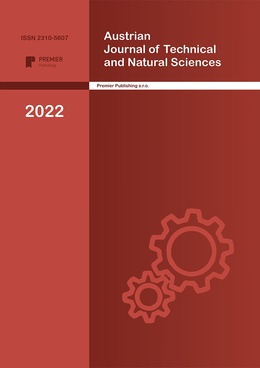Creation of a new model of burns in rats with the determination of their degree and use of Apis Mellifera carboxymethyl chitosan
Authors
Kurbonova Feruza Nurulloevna, Ikhtiyarova Gulnora Akmalovna, Khojiev Dilmurod Yakhshievich

Share
Annotation
The article provides information about thermal skin burns and emerging pathophysiological changes in integumentary tissues. To study and treat these severe processes, need to burn the skin of animals. A new model of thermal skin injury in rats has been created. For the occurrence of a skin burn, a soldering gun with a flat rod PP REXANT ZD-715 12-0188 with a tip heating temperature of up to 400 oC was used. The degree of the burn was determined by histological examination of skin tissues under a microscope, which was IIIA and IIIB degrees. Positive results of using an ointment based on carboxymethyl chitosan (CMCHS) have been recorded.
Keywords
Authors
Kurbonova Feruza Nurulloevna, Ikhtiyarova Gulnora Akmalovna, Khojiev Dilmurod Yakhshievich

Share
References:
1. Ashburn M.A. Burn pain: The management of procedure-related pain. The Journal of Burn Care & Rehabilitation. 1995, 16 (3 Pt 2), – p. 365-371.
2. Brigham P.A., McLoughlin E (1996). Burn incidence and medical care use in the United States: estimates, trends, and data sources. 17 (2). – p. 95–107.
3. Summer G.J, Puntillo K.A, Miaskowski C, Green P.G, Levine J.D. Burn injury pain: The continuing challenge. The Journal of Pain. 2007, 8 (7), – p. 533-548. 10.1016/j.jpain.2007.02.426
4. Horton J.W. Left ventricular contractile dysfunction is a complication of thermal injury. Shock. 2004, 22 (6), – p. 495-507. 10.1097/01.shk.0000145205.51682.c3.
5. Asko-Seljavaara S. Burn research-animal experiments. Acta Physiologica Scandinavica. Supplementum. 1986, 554. – p. 209-213
6. Abdullahi A., Amini-Nik S., Jeschke M. Animal models in burn research. Cellular and Molecular Life Sciences. 2014. 71 (17), – p. 3241-3255. DOI: 10.1007/s00018-014-1612-5.
7. Andrews C.J, Kempf M, Kimble R, et al. Development of a consistent and reproducible porcine scald burn model. 2016. 11 (9). 10.1371/journal.pone.0162888
8. Dahiya P. Burns as a model of SIRS. Frontiers in Bioscience. 2009. 14. –p. 4962-4967, 10.2741/3580
8. Bernard C. An Introduction to the Study of Experimental Medicine. New York: Dover Publications Inc; 1957. – p. 272.
9. Pfurtscheller K, Petnehazy T, Goessler W, et al. Innovative scald burn model and long-term dressing protector for studies in rats. Journal of Trauma and Acute Care Surgery. 2013. 74 (3), –p. 932-935, 10.1097/TA.0b013e31827d0fc3.
10. Campelo APBS, Campelo MWS, de Castro Britto GA, et al. An optimized animal model for partial and total skin thickness burns studies. Acta Cirúrgica Brasileira. 2011, 26 (1), –p. 38-42, 10.1590/S0102-86502011000700008.
11. Motamed S, Taghiabadi E, Molaei H, et al. Cell-based skin substitutes accelerate the regeneration of extensive burn wounds in rats. American Journal of Surgery. 2017. 214 (4), –p. 762-769, 10.1016/j.amjsurg.2017.04.010.
12. Wang CH, Chang SJ, Tzeng YS, et al. Enhanced wound-healing performance of a photo-polysaccharide-enriched dressing – A preclinical small and large animal study. International Wound Journal. 2017. – p. 1359-1369. 10.1111/iwj.12813.
13. Под ред. проф. С.В.Андреева, “Моделирование заболеваний. Медицина”, –М. 1973 г. – 423с.
14. Моновцов И.А. и др. Способ моделирования ожоговой травмы в эксперименте у животных. RU2001127406/14A. 2003-08-10.
15. Ихтиярова Г.А. Курбанова Ф.Н. Аpis mellifera жонсиз асалари хитозани асосида карбоксиметилхитозан синтези ва унинг таҳлили. НамДУ илмий ахборотномаси №11. 2021. – p. 92-95.
16. Kurbonova F.N., Ikhtiyarova G.A. Оbtaination of carboxymethyl chitosan from inanimate bees and study of its properties by conductometry, UV-spectroscopy. Academician An International Multidisciplinary Research Journal.Vol.11, Issue 10, October, 2021. –p. 1531-1535.


